 |
 |
 |
| Kuala Lumpur Japanese Association Japanese School |
| Click on the photo to enlarge it �E�E�E |
| No | Table of Contents |
| �P | �@Driver's License |
| �Q | �@Automobile |
| �R | �@Computer |
| �S | �@Baggage�AAirmail�ASurface mail |
| �T | �@Overseas Accident Insurance |
| �U | �@Vaccination |
| �V | �@Children's School Documents , etc. |
| �W | �@TV �E Video |
| �X | �@Radio |
| �P�O | �@Transformer |
| �P�P | �@Cell Phone |
| �P�Q | �@Digital Camera �E Electronic Dictionary |
| �P�R | �@Books |
| �P�S | �@Others |
| �P�T | �@Return to Menu |
| �@To drive a car in Malaysia , you need an international driver's license
or a Malaysian driver's license. It is common to obtain an international
driver's license in Japan and switch to a Malaysian driver's licsnse. The
international driver's license is valid for one year. �@To obtain an international driver's license in Japan , apply at the license office of the police station. The fee is about 2,700 yen , and you need a Japanese driver's license and ID photo. If you have to renew your Japanese driver's license within one year , you must renew your Japanese driver's license before you can apply for an international driver's license. You can get an international driver's license in about a week after you apply. Go to the nearest police station designated. �@To obtain a Malaysian driver's license , you need to issue an English translation certificate of your Japanese driver's license. It will take 3 or 4 days to issue. Then , submit it to the Malaysian Driver's license Center and and it will be issued on the same day. However , a Visa is required to obtain a Malaysian driver's license. Obtaining a Visa may take several months. <What you need to obtain a Malaysian driver's license> �Application form �Translation of Japanese driver's license (Apply to the Japanese Embassy to issue a translation of your Japanese driver's license. �@Embassy reception hours : Mon-Thu 8:00-12:15 , 14:00-15:45 �@�@�@�@�@�@�@�@�@�@�@�@�@�@�@�@�@�@Fri 8:00-11:45 , 14:45-15:45 �@�@�@�@�@�@�@�@�@�@�@�@�@�@�@�@�@�@Sat 8:00-12:15 �@What you need for translation : application form , Japanese driver's license , Notification of residence in Malaysia , passport ,commission RM66) �color photo (vertical 3.0cm �~ horizontal 2.5cm) �a copy of pasport(2-3pages , 4-5pages (Visa part)) �Japanese driver's license and its copy �commision (1 year : RM 30 , 2 year : RM 60) |
| �@In Malaysia , a car is as expensive as buying a house. However , there
is no vehicle inspection system , and repair and gasoline costs are cheap
, so you can keep it cheap after you buy it. �@Malaysian domestic cars cost 1.7 to 2 million yen , but Japanese cars cost more than 2.7 million yen for the Corolla. �@You will be enrolled in Malaysia for car insurance , but if you have an insurance suspension certificate or accident-free certificate in English , you can get a discount of up to 45%. �@Also , it is a good idea to discuss with your insurance company in Japan how you can take over your insurance after returning to Japan. �@The photo below is a Malaysian domestic car "WAJA" with a displacement of 1600. It has the same right handle as Japanese cars , but the levers of the turn signal and wiper on left and right of the handle are opposite to those of Japanese cars. Until you get used to it , you often make a mistake on the left and right of the lever. �@The regular gasoline price in Malaysia is about 40 yen per liter. �@In addition , all gas stations in Malaysia are self-service. |
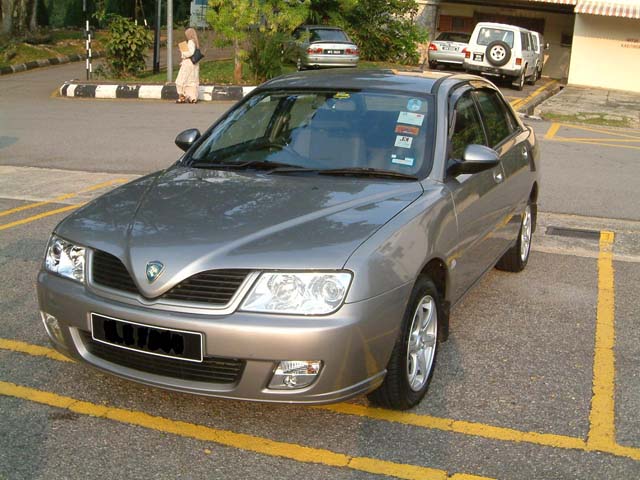 |
| Malaysian Domestic Car "�v�`�i�`" |
| �@We recommend that you bring your laptop with you in your carry-on baggage.
�@You can buy a computer in Malaysia , but it is difficult to get the Japanese version of the software. There are few types , but you can get it at "Nikoniko PC Kobo" in the Japanese Association (Japan Club). You can also request repairs of PCs brought from Japan at "Nikoniko PC Kobo". |
| �@Luggage preparation must be divided into baggage , airmail , and surface
mail. �@Baggage is the baggage you bring with you when traveling to Malaysia. It takes about 2 weeks for airport mail and about 1 month for sea mail. |
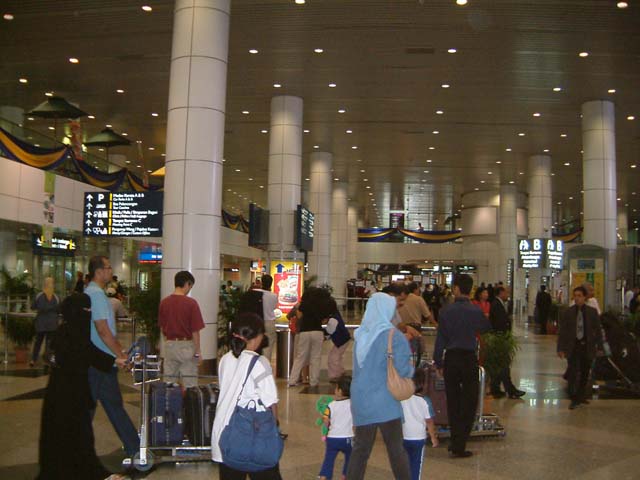 |
| KLIA Arrivals Hall�iKuala Lumpur International Airport�j |
| �@By the way , there are a total of 23 airports for regular flight takeoff
and landing in Malaysia , 12 in Penisular Malaysia and 11 in East Malaysia.
The photo above shows the arrival lobby of Kuala Lumpur International |
| �@It can be confusing due to differences in life , customs , culture , laws
etc. in a foreign country that you are not accustomed to , and even if
you are carful enough , you may have an accident or get sick. �@Also , in foreign countries , if a Japanese person cause damage to the body or property of a third party , he/she may receive a particularly large claim for compensation. �@As a preparation for such cases , there is "overseas accident insurance". In the event of an emergency due to injury or illness in a foreign country , the resident staff will be available 24 hours a day , 7 days a week at the Overseas Comprehensive Support Desk. �@In addition , in cooperation with a Malaysia hospital , you can receive services that allow you to receive treatment without cash. <An example of the contents of overseas accident insurance> �@Disease(Death , Treatment costs) ��� If you have been hospitalized or operated on for a cold , diarrhea , or cecum overseas. �AInjury(Death , Residual injuly , Treatment costs) ��� Overseas , during sports or in a car accident. If you are injured and have been treated , hospitalized or operated. �BLiabity ��� When the person or family member destroys another person's property and makes a claim for compensation overseas. (However , excluding car accidents) �CCarrying items ��� If the camera , watch , etc. are caught in a fire or storen while being carried , or if they are dropped and destroyed , or if you receive a reissue of your passport. However , you will not be covered by insurance while you are in the migration facility. �DRescue costs ��� If you are hospitalized or in distress for more than 3 days due to injury or illness overseas , and your family goes to the site from Japan. �EEmergency temporary return fee ��� If you return to Japan temporarily due to the death or seriousness of a relative within the second degree during your stay around (round-trip airfare , hotel fee , etc). |
| �@If you are vaccinated against hepatitis A or B in Japan before you travel
, you will need to be vaccinated 2-3 times. In addition , this is not covered
by insurance , so it is a considerable expense. �@After traveling , you can get vaccinated at a Malaysian hospital such as "Japan Medicare Clinic" or "Pantai Medical Centre" where you can speak Japanese. The cost is cheaper than in Japan. �@I was vaccinated at a private hospital "Gleneagles Intan MEDICAL CENTER" in the center of KL with a single injection of hepatitis A and hepatitis B vaccinations. The inside of the hospital is bright and clean , and there is an atmosphere that makes you think that it is a hotel , and a Japanese female guide who helped me in Japanese was resident. It was very helpful to be able to immediately ask her what I didnt't understand. |
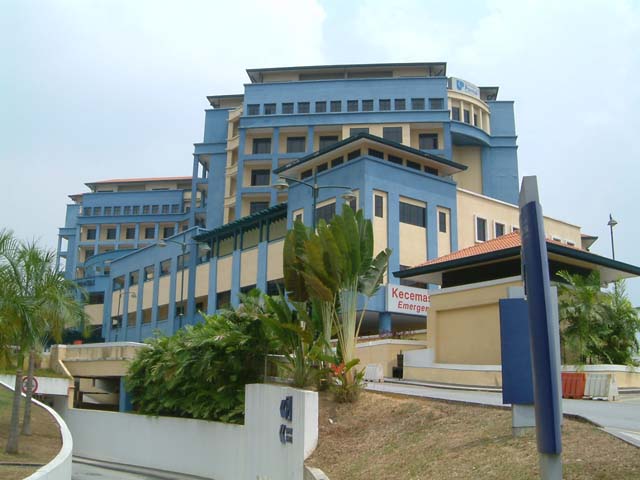 |
| Pantai Medical Centre |
|
�@��Cost of "Gleneagles Intan Medical Center"�� 1st time�F�` type�{�a type�@�q�l�P�S�T 2nd time�i1 month later�j�F�` type�{�a type�@�q�l�P�S�T 3rd time �iHalf a year later�j�F�` type�{�atype�@�q�l�P�S�T �@�@�@�i�X months later�j�FBlood test Total �F�q�l�S�R�T�{Blood test costs �@��Cost for adult of "Pantai Medical Centre"�� 1st time�F�` type + �a type�@�q�l�Q�P�O 2nd�i1 month later�j�Fonly �a type�@�q�l�U�O �Rrd�iHalf a year later�j�F�` type + �a type�@�q�l�Q�P�O Total�F�q�l�S�W�O �@��Cost for child (Under 16 years old) of "Pantai Medical Centre"�� ��The minimum age for hepatitis A vaccination in Japan is 12 years. 1st time�@�atype�@�q�l�S�T �@2nd�@time �a type�@�q�l�S�T �@�Rrd�@time �a type�@�q�l�S�T Total�F�q�l�P�R�T Infant vaccination in Malaysia has a different system from Japan and is as follows , and you can receive it at Malaysian hospitals such as "Japan Medicare Crinic" and "Pantai Medical Centre" who can speak Japanese. Immediately after giving birth �F�a�b�f�AFirst hepatitis �a 1 month�F2nd hepatitis �a 3 months�F3 types mixed + First Polio + Hib 4 and a half months�F3 types mixed + 2nd Polio + Hib 6 months�F3 types mixed + 3rd Polio + Hib , 3rd hepatitis B 12 months�F�l�l�q 13 months�Fchicken pox 1.5�`2 years old�F3 types mixed in the 2nd period + Polio �@��Cost at "Gleneagles Intan Medical Center"�� ��Costs vary sightly from hospial to hospital. BCG�|RM14�Ahepatitis B�|RM26�A3 types mixed�{Polio�|RM23�AHIB�|RM29�AMMR�|RM33.5�Achicken pox�|RM120�AJapanese encephalitis�|RM51�ARabies�|RM178 |
|
��About Japanese school�� �@There is Kuala Lumpur Japanese School (JSKL) in Malaysia. There is kindergarten , elementary school , and junior high school. It is a private school established by the kuala lumpur Japanise Association , with about 1200 students enrolled at the Embassy of Japan in Malaysia. There are no classes on Saturdays and Sundays. There is no designated clothing , and you are free except during physical education classes. �@If you don't join the Kuala Lumpur Japanese Association , you will not be able to transfer a Japanese School. �@After completing the enrollment procedure at the Japanese Assciation , the child goes to a Japanese School with his parents and performs the necessary procedures for admission. You have a meeting with your homeroom teacher. You can also pay by check such as entrance fee and apply for a school bus. �@There are two ways to go to Kuala Lumpur Japanese School , one is to be treated as absent for a long time while still enrolled in a Japanese school , and the other is to transfer from a Japanese school. Since the treatment differs depending on the local government , It is necessary to consalt with the school in Japan as soon as possible. �@The documents to bring from Japan are as follows. �@Certificate of enrollment at a Japanese school �AA copy of the guidance record of the school enrolled in Japan �BHeaith checklist for Japanese school �CDental inspection table for Japanese school �@In principle , �A�B�C�@are mailed from the previous school , but since it is an overseas school , they may be handed over to parents. �@Children enrolling the first grade of elementary school don't need the documents�@�@ to �C. �@Students enrolling in the first year of junior high school student need an elementary school diploma and a copy of the instruction manual. �@The textbooks will be received at the school in Japan in April , and only books that are different from those use by the Malaysian Japanese school will be applied to the "Overseas Child Education Promotion Foundation". You will bring them with your buggages. �@Get a "textbook receipt certificate" from your school in Japan and apply with the shipping fee enclosed. In about a week , you will receive the necessary textbooks. �@Most of the school supplies made in Japan are available in Kuala Lumpur. It is expensive and difficult to find at the beginning of your trip , so it is better to bring the one you used in Japan so that you can use it immediately after enrollment. |
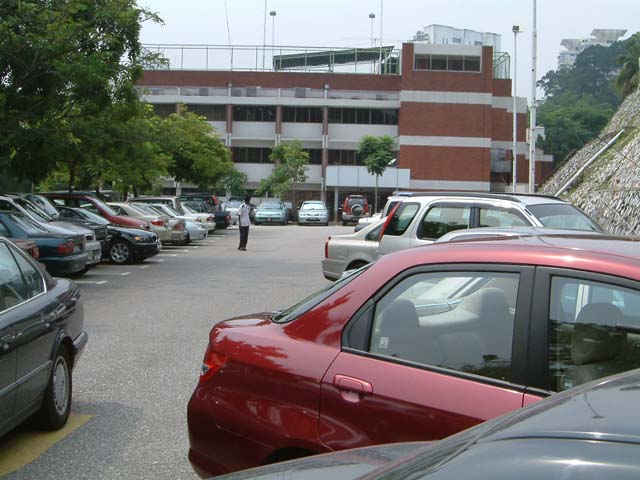 |
| Japan Club Is Full of Cars �iJapanese Association�j |
| �@TV and Video are in PAL format in Malaysia and NTSC format in Japan. If
you have TV or VCR that is shared by both PAL and NTSC , you can watch
tapes brought from Japan or connect your camera to the TV. �@NTSC video tapes are available at rental video shops in Japan Club and rental video stores for Japanese people , and you can watch Japanese TV programs. �@If you sign a contract for Astro TV (RM104/1 month) , you can watch NHK's international satelite broadcasting . By the way , the time difference between Malaysia and Japan is one hour , so you can watch NHK's morning TV novel from 7:15. |
| �@Bringing FM radio tuners from Japan is prhibited , but you can buy them
cheeply in Malaysia. �@You can also listen to Japanese NHK broadcasting on shortwave. |
| �@The household power supply in Malaysia is 240V , 50Hz. The plug has 3 holes , but a 2-hole type can also be used. A transformer and plague are required to use Japanese-specification electrical appliances (100V). These can be purchased in Japan, but they can be easily purchased at electronics stores in Malaysia. �@However , Japanese extension cords and outlets used through transformers in Malaysia are rarely found in Malaysia , so it is better to bring them from Japan. |
| �@Cell phones are a necessity , but basically Japanese ones can not be used
, so you will buy them in Malaysia. �@Emails using cell phones purchased in Malaysia are possible. However , since Japanese is not supported , it is almost impossible to email people in Japan using a cell phone. �@Cell phone usage fees are paid by purchaging a card. You can use it only for the time according to the price of the purchased card. |
| �@What you take with a film camera can also be developed and reprinted in
Malaysia. However digital cameras are useful for keeping a large amount
of records in overseas life.�@ �@Also , electronic dictionaries are much more convenient than bringing many different types of dictionaries from Japan. �@Digital cameras and electronic dictionaries can be purchased in Malaysia , but they are expensive , so it is better to prepare them in Japan. |
| �@Japanese books and magazines are 1.5 to 2 times more expensive than Japan
, but most are available at book stores in ISETAN , JASCO , and Japan Club. �@Among them , Kinokuniya Bookstore in ISETAN has a very large store , and all the books sold are written in Japanese. �@Specialized documents are often not available at stores , but can be ordered. For subscriptions , it may be cheaper to deposit in advance and have the publisher send it directly. �@you should bring your high school work books , sheet music , dictionary (English-Japanese , Japanese-English , Japanese ) , home medical care , etc. In addition to dictionaris , home medical care may also included in electronic dictionaries. �@Dictionary (Japanese-Malay , Malay-Japanese) is cheaper to buy in Japan , but Dictionary (English-Malay , Malay-English) is cheaper to buy in Malaysia. I bought a book of English-Malay Dictionary and Malay-English Dictionary at a bookstore in the university for RM11.0 (about 330 yen). �@Japanese books are rented out for a fee at the Japan Club library. Rental tickets for 25 books are about 300 yen. |
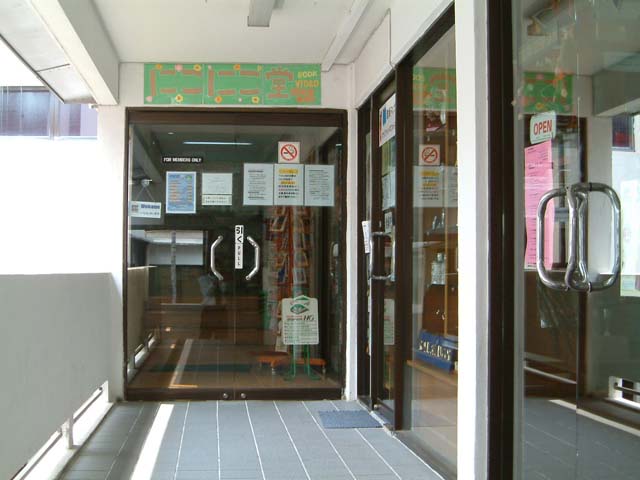 |
| "Nikoniko do" in �i�������� �b������ |
| �@It is necessary to store and dispose of housing and funiture , cancel contacts such as electricity , gas , water , and telephone , store and dispose of private cars , dispose of resident's card , language training (English conversation) , etc. before traveling. |